Eco dyeing with natural plant materials!
My friend Diedre Adams attended an India Flint workshop at this year’s SDA conference in Minneapolis, and shared her experience in 2 great blog posts. Who knew you could make cool art cloth by picking up stuff on the ground in your environment, wrapping it in fabric, and boiling it in water? No toxic chemicals involved, and no special supplies to buy. After reading her first post, I was off and running – I just had to try this.
Really having no idea what I was doing (other than having read Diedre’s first blog post and having previously done some dyeing with procion MX dyes), yet trusting my process-intensive background in printmaking, I dove in. We had had a pretty intense hail storm and I have lots of trees/plants/greenery in my yard, so there were lots of healthy green leaves, stems, and petals laying about for easy gathering. I also had a big collection of dried wildflowers that I had harvested years ago and still had preserved between layers of newsprint, knowing I’d find a use for them some day. I laid out my fabric and like a burrito, filled it with plant materials and in some cases, wire and metal pieces, and then folded and rolled it up into tight bundles:
I tore some strips of PFD cotton fabric and also decided to try dyeing some silk (which I have never worked with before but had recently bought some yardage to try out). I didn’t know this at the time, but when using protein fibers such as silk, it is necessary to add some type of mordant agent to the boiling water pot to “fix” the natural plant dye colors to the fabric. There are several things that can be used for mordant – metal, milk, and soy milk are some options.

Wrapping up the "burrito" of plant materials. In this case, I used a hollow metal rod to roll up the bundle around and then tied it with string.
I had seen some pictures in Diedre’s post where they had used metal clamps and flat metal pieces as “supports” when preparing the fabric bundles. Lucky for me, my Partner uses wire and metal in some of her work, so I was able to pilfer some great rusty metal pieces from her stash for my bundling. I used these metal pieces as embellishments on the fabric bundles and to help provide some structure as I rolled, folded and wrapped the plant materials up in the fabric, tying them into tight bundles with string and rubber bands:
Then it was bundle boiling time. All those leaves, needles, petals, sticks, and pieces of metal made for an interesting aroma in the house. It was my very own backyard brew!
After boiling, I let the bundles sit overnight in the brew pot before opening up the first one.
The magical part of the process – revealing the results:
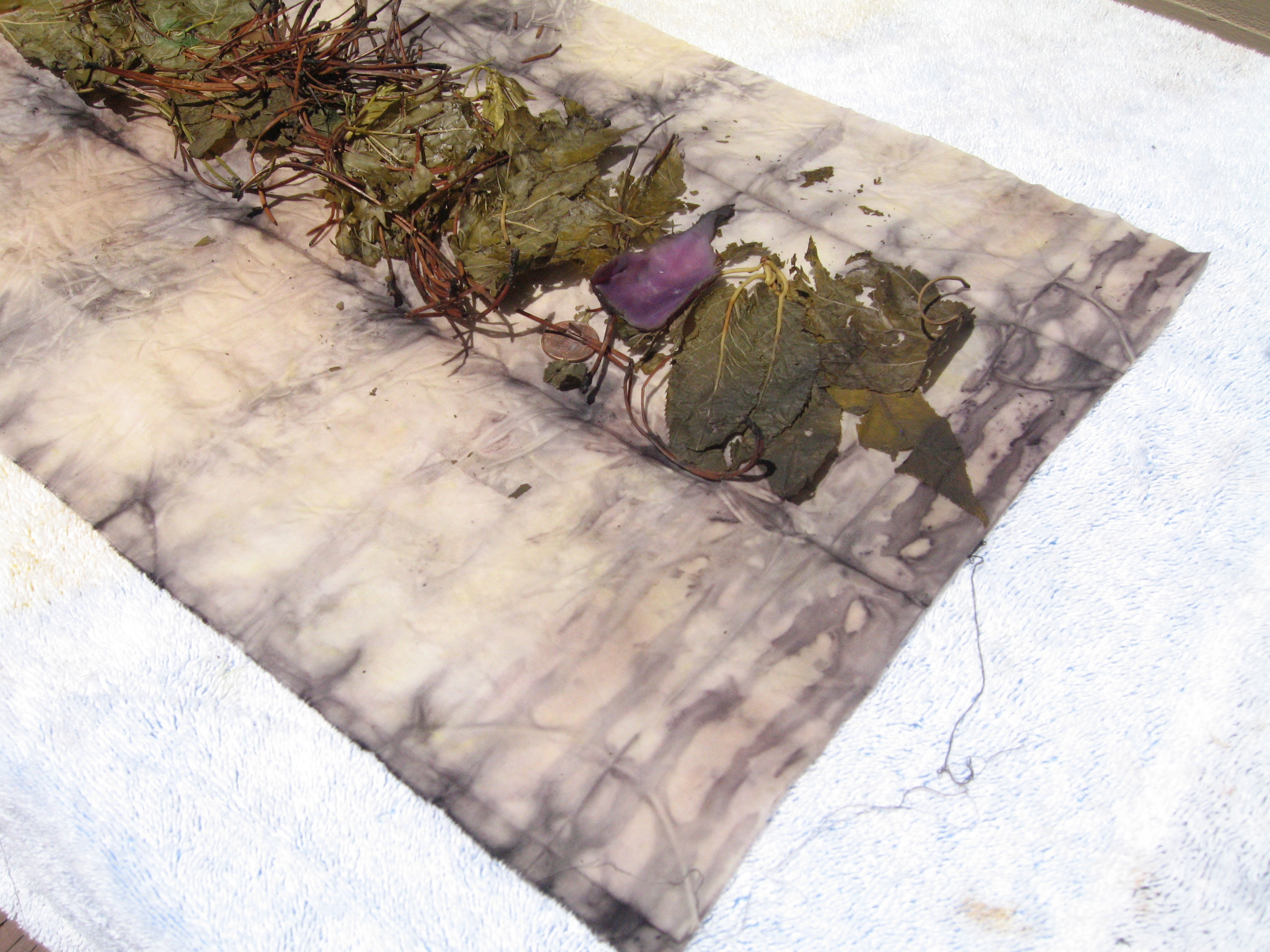 Above photos are 1 piece of cotton, and below, are photos of another piece of cotton:
Above photos are 1 piece of cotton, and below, are photos of another piece of cotton:
After heat setting the color and then washing the fabrics out, these 2 pieces of cotton looked like this:
The colors that the plant materials created in each fabric are very subtle yet beautiful (hard to see in the photos), and I love the dark shapes and marks that the metal pieces and string resist contributed. These 2 pieces of fabric really seemed to need to be together and so, over the next 3 days, I created a new textile painting using these fabrics along with some other cotton that I had hand-dyed earlier this year:
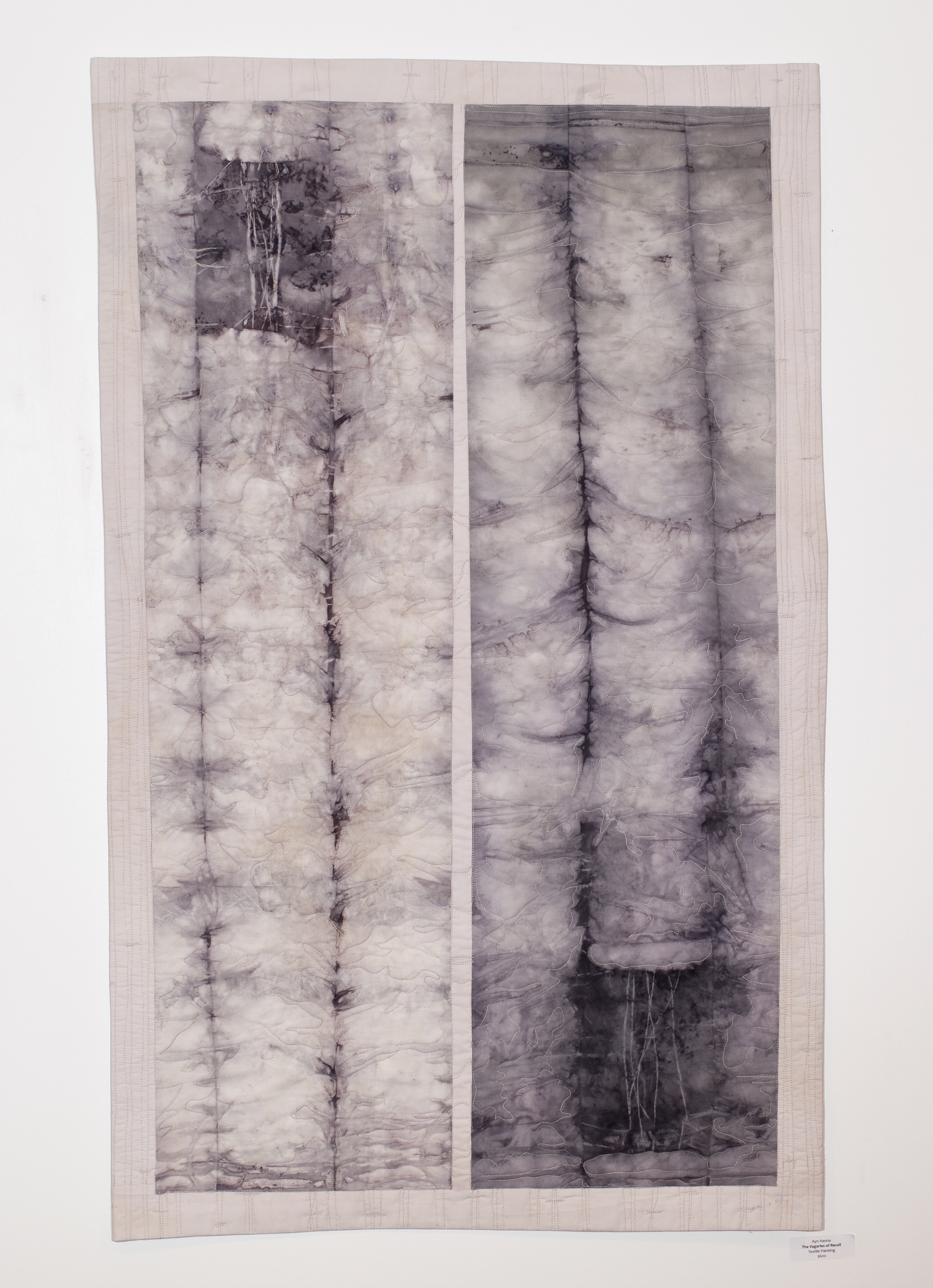
"The Vagaries of Recall" ©Ayn Hanna, 46"x28", Textile Painting (cotton fabrics, eco-dyed and hand-dyed by the artist, cotton batting, cotton threads)
I’ll post more of the results of this first eco-dyeing session, as well as photos from a follow-on 2nd dyeing session in a follow-up post.







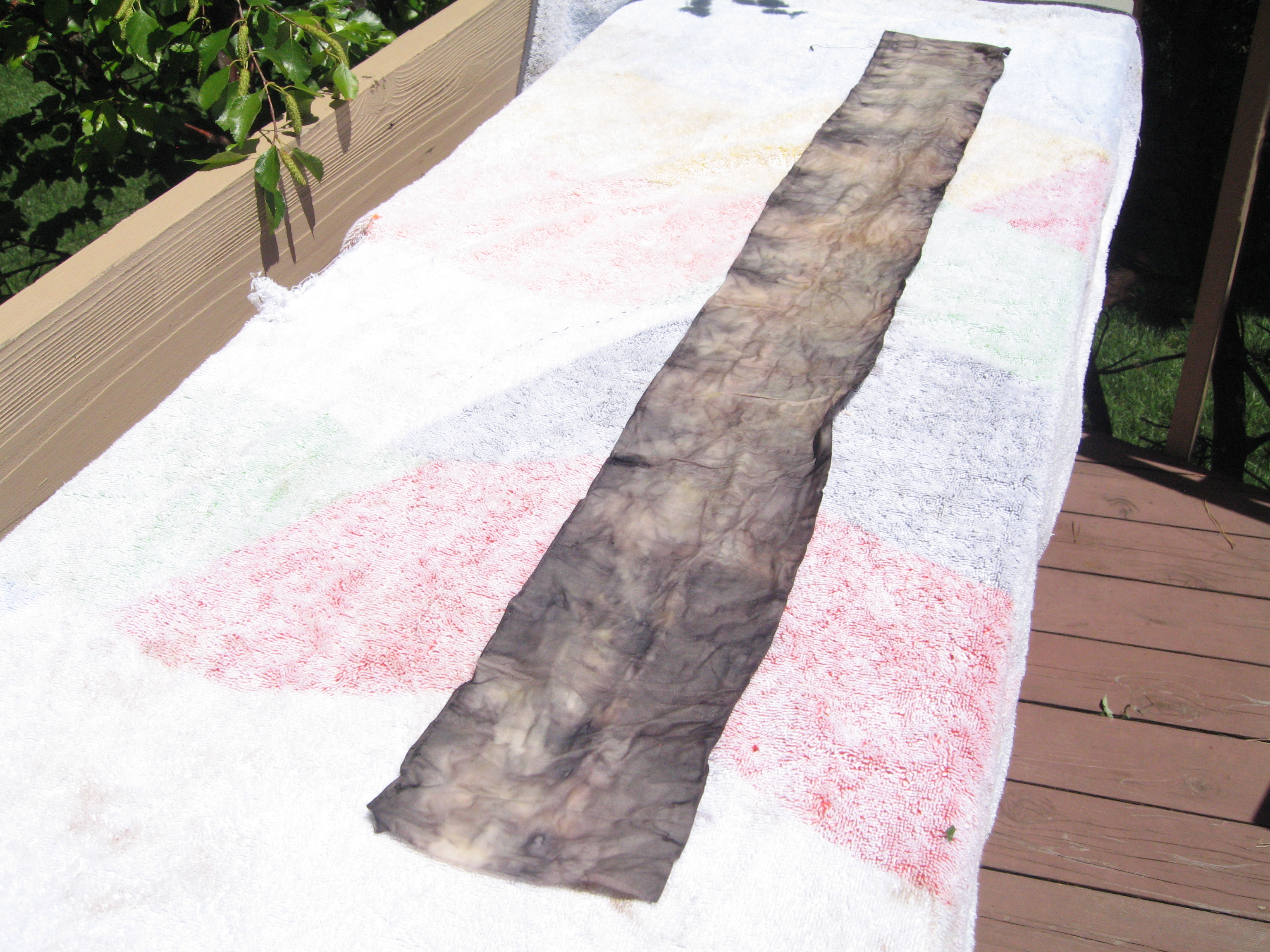
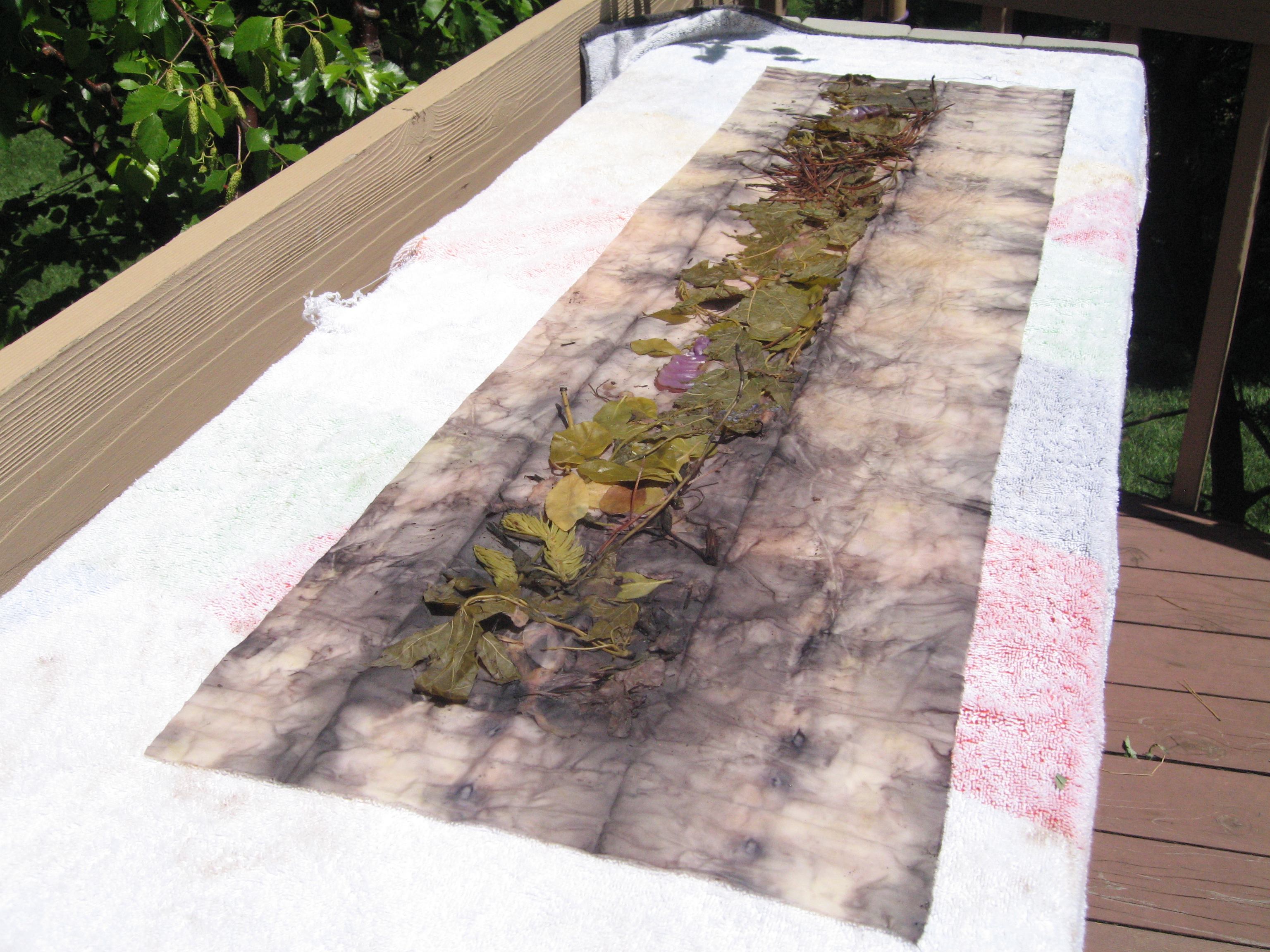
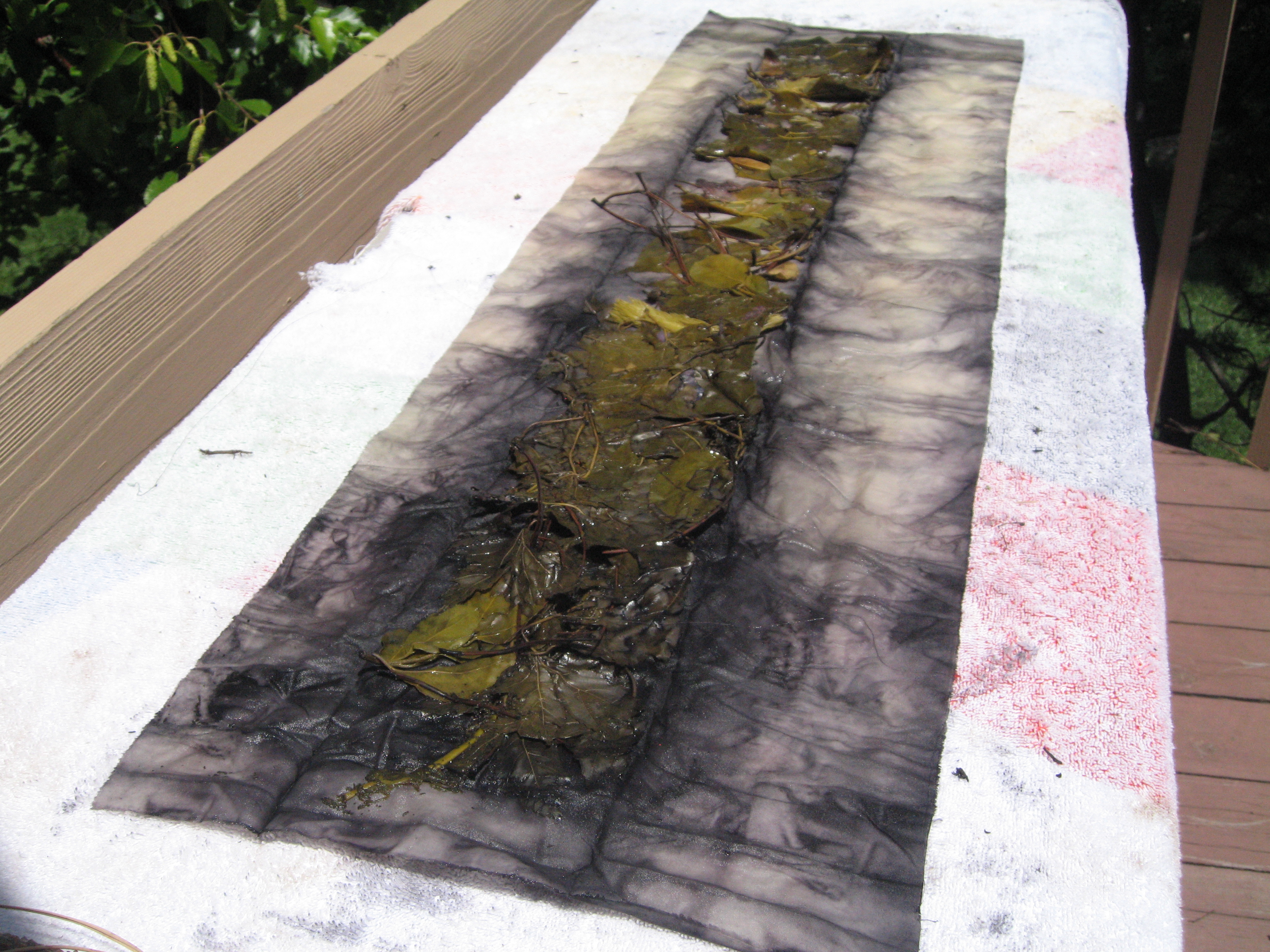
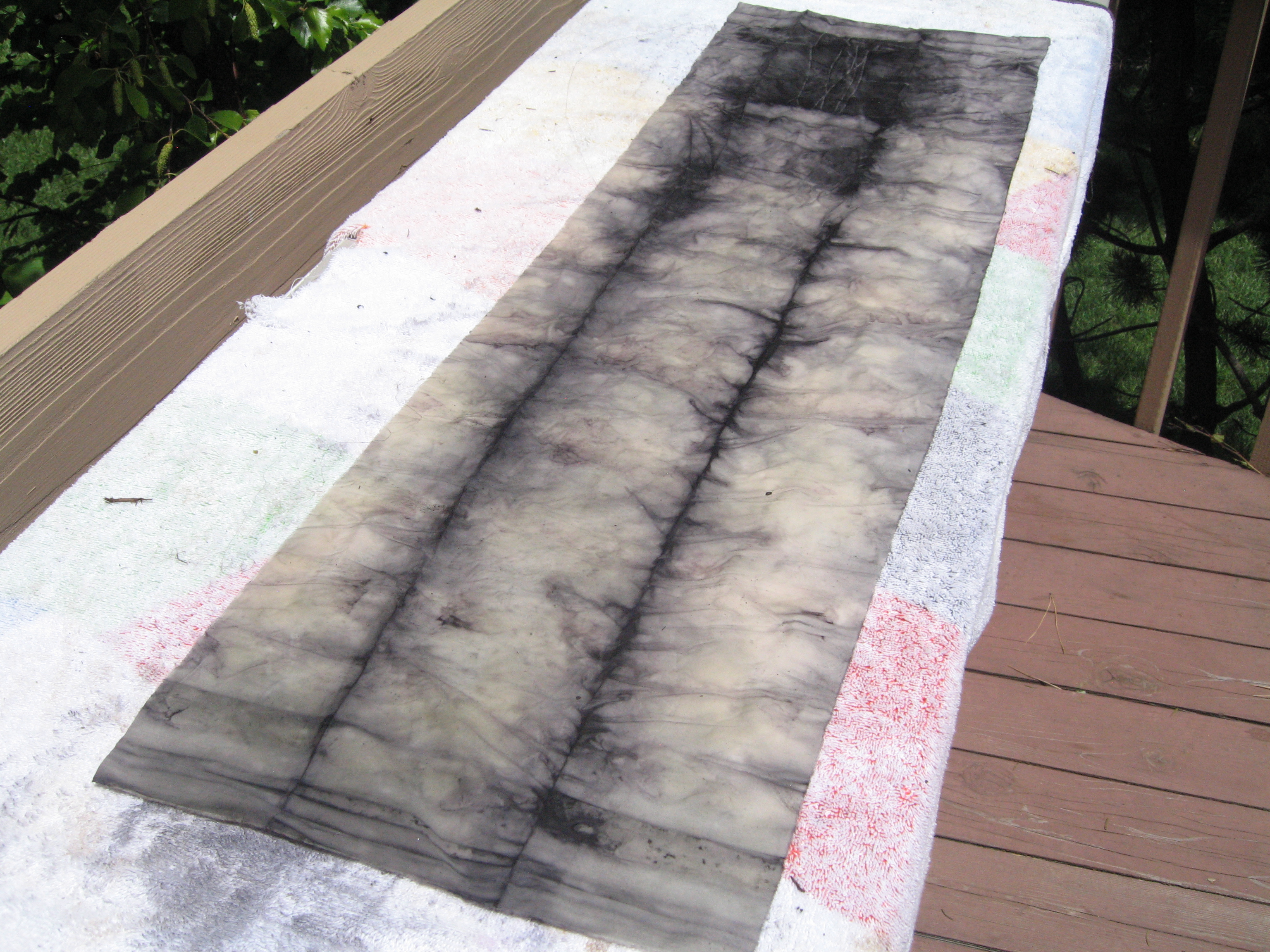
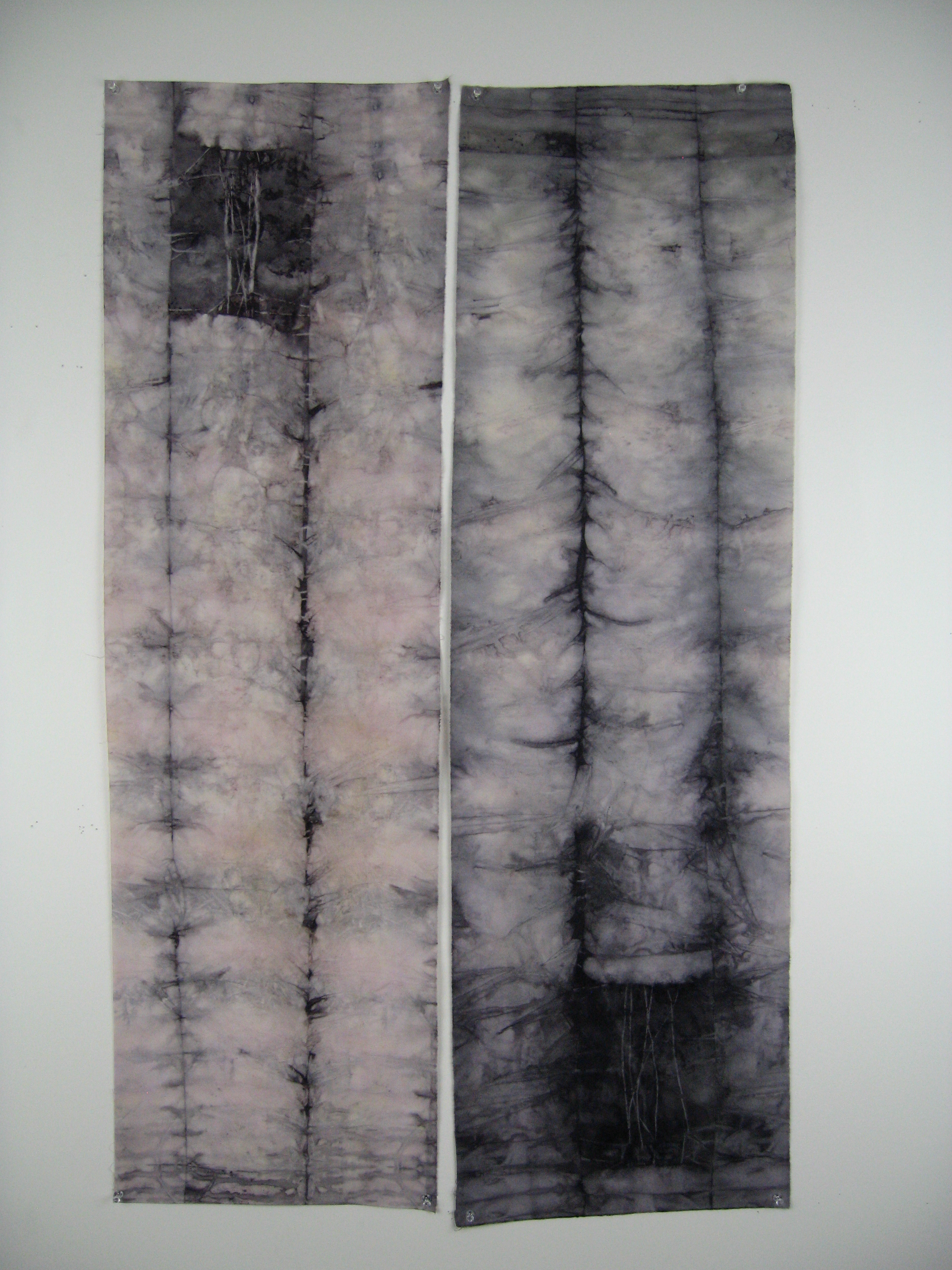
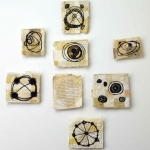
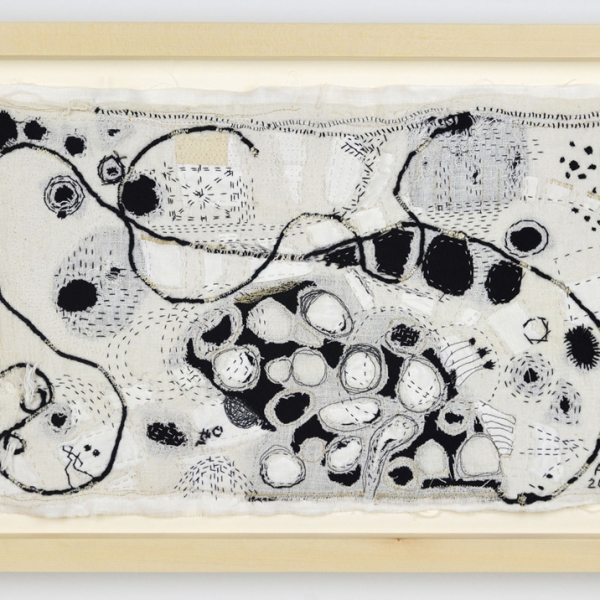
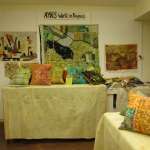
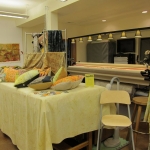

Ayn,
Your ability to just dive into new experiences is so inspiring!
Thank you,
Barbara
I watched an episode of Wisconsin Gardener a few years ago. They were using herbs for natural fabric dye. I definately remember oregano being used, Beets are also very nice. I colored Anna’s hair with beet juice – it only lasted a day- till she washed it, but it was a lovely shade of pink.
This is great…reminds me of dying yarn in the 70″s….I think I will try it….I may still remember about all that stuff. Aspen leaves work too. Thanks. Ruth Briggs
India headed to St. Louis after your friend’s workshop where we had 4 days of eco printing fun. I wrote 4 posts that covered the workshop with lots of pics plus additional ones of my own samples. I hope you’ll check it out at Sentimental Pentimento. Looks like you had some good results on your first try.
Facinating and beautiful, Ayn!
Joyce and Barbara – Thank you!
Gretchen – The herbs and beets sound interesting. I imagine the pink hair looked really cool for as long as it lasted!
Ruth – Thanks for the idea about the aspen leaves, my neighbor has a big aspen tree so I’ll have to give those leaves a try…maybe in fall when they are really golden.
Pat – I will definitely check out your blog posts; I’m intrigued to see your results.
[…] used principles that India teaches in this book to do my first eco-dyed cloth which I wrote about in this post. This past weekend, I dyed a couple of cotton/linen napkins using only tea. One is at the top […]
Hello
I live in Southern Colorado
Where can I get eucaliptus leaves, the kind that will render red or orange
Does it have to be the Australian sideroxylon???
Thank you
Perla
Hi Perla,
While using fresh leaves direct from the tree source are best, for those that don’t live where eucalyptus trees grow, you can purchase eucalyptus from a local florist or grocery store. However, because you can’t know what the history of those purchased leaves are (how long ago they were harvested, etc), they may or may not give the red/orange color – you can try all varieties of eucalyptus.